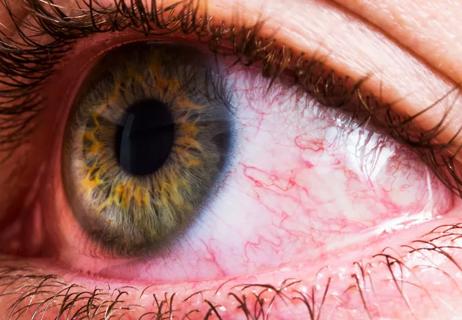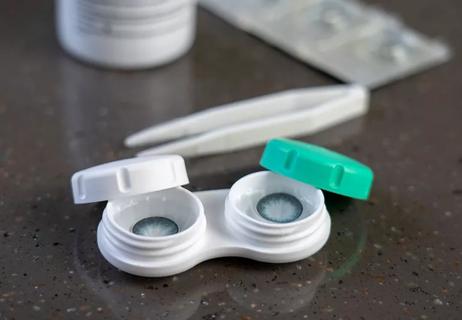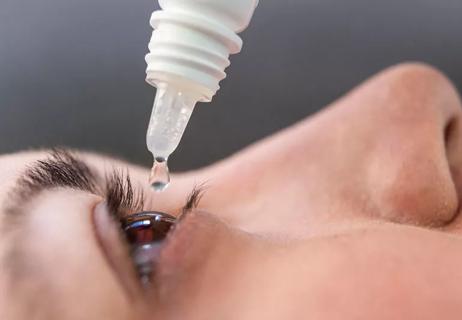Eye crusts can signal an infection or your body’s natural self-cleaning at work

It’s the same thing every morning: As soon as you’re awake and ready to start your day, you reach up and rub your eyes. Whether you consider it cleaning out gunk or something more pleasant like “sweeping the sleep from your eyes,” you’re wiping away a sort of crust that’s formed in your eyes while you dozed.
Advertisement
Cleveland Clinic is a non-profit academic medical center. Advertising on our site helps support our mission. We do not endorse non-Cleveland Clinic products or services. Policy
Yes, it’s gross. But it also has a purpose. And eye crust forms from more than just sleep — it can also be a sign of infection or that something is wrong with your eyes. To get the lowdown on what your eye crust can mean, we spoke to functional medicine expert Melissa Young, MD.
There are a few things that can cause eye crust, also known as rheum, says Dr. Young. It’s the crust that forms in the corners of your eyes or even causes your eyelashes to stick together. And the reason for it can range from the mundane to the medically important.
The eye crust that forms when you sleep is all about keeping things clean, says Dr. Young. “During the day, we’re frequently blinking and washing away dirt, dust, exfoliated skin cells and mucus,” she says. “When you’re sleeping, you’re not blinking, so all of that mucus, oil, dirt and skin cells accumulate in the corners of your eyes.”
And while you sleep, everything congeals and dries out, forming that crust. This is typically part of the natural process, but there are times when something else is going on.
If you’re prone to seasonal allergies, you’ve probably woken up with itchy, red and swollen eyes that can be crusted over. With allergies, your body produces that mucus to do an extra thorough job of cleaning out the allergens. That excess discharge can sometimes be so much that it feels like your eyes are glued shut, too.
Advertisement
Everything from pollen to dust can trigger allergies in your eyes, Dr. Young says. “Whether it’s dust or animal allergies, you get itching, inflammation and redness and more tearing in the eyes, plus that mucus discharge.”
One thing that might offer relief is showering before bed. “We collect dust, pollen and other allergens throughout the day, so washing your hair and your face can help rinse them away,” says Dr. Young.
Cold compresses and over-the-counter (OTC) eye drops can also help, but be sure to consult your doctor if inflammation and discharge worsen. More severe symptoms to look out for include swollen eyelids and a yellow or green discharge, which can be a sign of bacterial or viral conjunctivitis.
Ah, yes, pink eye. This highly contagious eye infection is synonymous with school kids, but it’s also one that can affect both children and adults equally. The condition gets its name from one its primary symptoms: reddening of your conjunctiva — that is, the white area of your eyeball. “You’ll also see a stickier discharge,” notes Dr. Young, “but if it’s viral, the discharge is less colored, not the yellow or green of bacterial conjunctivitis.”
As pink eye is so contagious, be especially careful of your behavior if you get it. “Don’t rub your eyes and then shake someone’s hand,” advises Dr. Young. “Be sure to frequently and thoroughly wash your hands and don’t share towels with anyone else in your household.”
She adds that it’s best to consult with your doctor — as there are so many overlapping symptoms between viral and bacterial conjunctivitis, treatments can differ.
When you wake, it’s pretty normal to rub your eyes to clear away the crust. But if possible, Dr. Young recommends taking a different approach. “Using a washcloth that’s been soaked with warm water is a safe, easy way to clean your eyes in the morning,” she says. “And it has the added benefit of keeping you from touching your eyes, which is one way to transmit bacteria to your eyes.”
That approach can be especially important if you have excess discharge from one of the conditions listed above.
According to Dr. Young, you should see your healthcare provider when you have any of these symptoms:
Because of overlapping symptoms, your doctor will be able to help you figure out what you’re dealing with and the best way to treat it.
Advertisement
Learn more about our editorial process.
Advertisement

What to consider before you self-treat

Allergic reactions and overprocessing are just a couple things to keep an eye out for

Eye drops and cold water rinses can help speed up healing for viral and allergen-related conjunctivitis, but a bacterial infection will need antibiotics

For starters, don’t sleep in contact lenses

How and when to use over-the-counter drops

3 common questions answered

Most recommended precautions center around minimizing bruising or swelling

Type 2 diabetes isn’t inevitable with these dietary changes

Applying a hot or cold compress can help with pain